
- Home
- Travel Packages
- Top Destination
-
Travel Attraction
By Category
Top Attraction

- Travel Agents
- Car Rentals
- Hotels
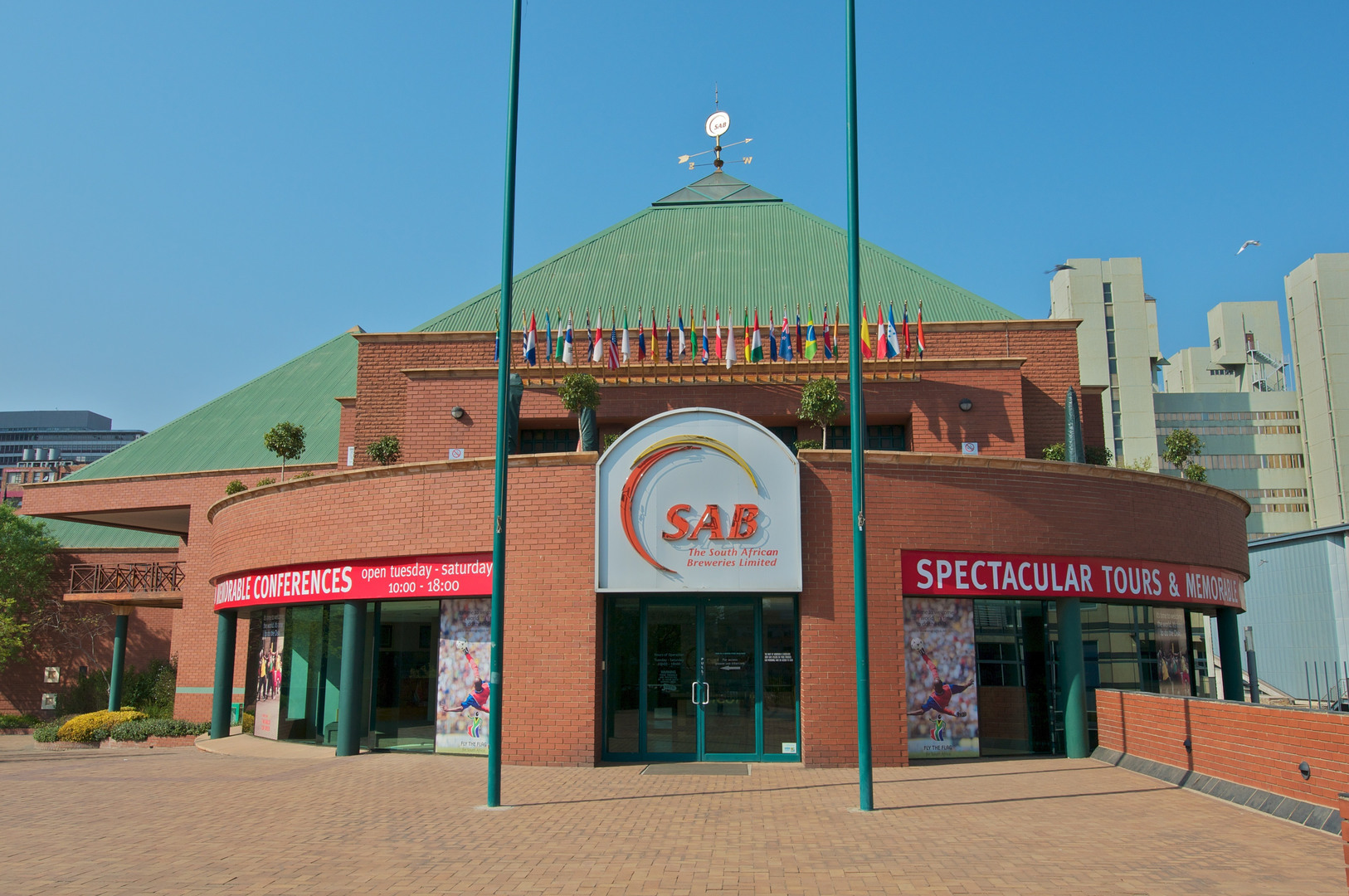
The SAB World of Beer is one of the most popular destinations for the beer enthusiasts from all over the world. Situated in Johannesburg, the SAB World of Beer presents the history of beer brewing as it travelled from Mesopotamia to Africa and Europe. The beer brewing processes are depicted in detail. And of course, there is no better way to end the tour, than with a couple of ice cold frosties.
Explore More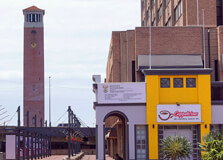
The Campanile, standing tall and proud in the heart of Port Elizabeth, South Africa, is an iconic landmark steeped in history and offering breathtaking panoramic views of the city and Algoa Bay. This impressive structure, built to commemorate the arrival of the British Settlers in 1820, serves as a significant historical monument and a popular tourist attraction. Its distinctive architecture and the chiming of its bells have become synonymous with Port Elizabeth's identity, making it a must-visit destination for anyone exploring the city's rich heritage and scenic beauty. How to reach The Campanile, Port Elizabeth The Campanile is centrally located in Port Elizabeth's city center, making it easily accessible by various means of transportation: By Car: If you are driving, The Campanile is situated at the entrance to the Settlers Park, near the Baakens River. It is well signposted from different parts of the city. Parking is available in the vicinity, although it might be limited at certain times. It's advisable to look for parking along the streets or in nearby parking garages. By Taxi or Ride-sharing Services: Taxis and ride-sharing services like Uber and Bolt are readily available in Port Elizabeth and can provide a convenient ride directly to The Campanile. Simply provide "The Campanile, Port Elizabeth" as your destination. By Public Transport: Port Elizabeth's public bus system has routes that service the city center, with several stops within walking distance of The Campanile. You can check the local bus schedules for the most convenient options from your location. By Walking: If you are staying in the city center or nearby areas, The Campanile is easily reachable on foot. It's a prominent structure that can be easily located. Weather in Port Elizabeth Port Elizabeth enjoys a mild climate year-round, often referred to as having a "Mediterranean" climate. Summers (December to February) are warm and sunny with average daytime temperatures ranging from 20°C to 25°C. Winters (June to August) are mild with average daytime temperatures ranging from 15°C to 20°C, and occasional rainfall. The weather is generally pleasant for outdoor activities throughout the year. When visiting The Campanile, the weather will primarily affect your experience at the top viewing platform, which is open-air. It's advisable to check the weather forecast before your visit and dress accordingly. Even on a mild day, it can be breezy at the top of the tower. Timing The Campanile typically has specific opening and closing hours for visitors who wish to ascend the tower. It is recommended to check the official Nelson Mandela Bay Tourism website or contact them directly for the most accurate and up-to-date information on their operating hours before planning your visit. Generally, such attractions tend to be open during standard business hours, usually from morning to late afternoon. The best time to visit The Campanile is often during the late afternoon to enjoy the sunset views over the city and the bay, provided the weather is clear. This also offers a beautiful photographic opportunity. Why famous for The Campanile, Port Elizabeth? The Campanile is famous for several significant reasons: Historical Significance: Built in 1923 to commemorate the centenary of the arrival of the British Settlers in 1820, it stands as a powerful symbol of the city's colonial history. Panoramic Views: The tower offers unparalleled 360-degree views of Port Elizabeth, Algoa Bay, the harbour, and the surrounding landscape from its observation deck. Chiming Bells: The Campanile houses a set of 23 bells, which chime at regular intervals, adding a unique auditory dimension to the landmark and the surrounding area. Architectural Landmark: Its distinctive and elegant architecture makes it a prominent feature of the Port Elizabeth skyline. Tourist Attraction: It is a popular destination for tourists seeking historical insights and stunning views of the city. Location at Settlers Park Entrance: Its position at the entrance to the scenic Settlers Park adds to its appeal, allowing visitors to combine a visit to the tower with exploring the park. Entry and visit details about The Campanile, Port Elizabeth Visiting The Campanile is generally accessible, and there is usually a nominal fee to ascend the tower. Here are some details regarding entry and your visit: Entry Fee: There is typically an entrance fee to go up The Campanile. The fee is usually quite reasonable. It's recommended to check the official Nelson Mandela Bay Tourism website for the current fee structure. Tickets: Tickets are usually purchased at the entrance of The Campanile. Ascending the Tower: Visitors can typically ascend the tower via a series of stairs to reach the observation deck at the top. Be prepared for a moderate climb. Duration of Visit: The time spent at The Campanile will depend on how long you wish to enjoy the views and take photographs. Allow at least 30-45 minutes for the ascent, viewing time, and descent. Accessibility: Due to the historical nature of the structure and the need to climb stairs, The Campanile may not be fully accessible to individuals with mobility challenges. It's advisable to inquire about accessibility options before your visit. History The Campanile was conceived as a lasting tribute to the arrival of the British Settlers in Algoa Bay in 1820. The foundation stone was laid in 1920, and the structure was officially inaugurated in 1923. The name "Campanile" is derived from the Italian word for a freestanding bell tower. Over the years, The Campanile has become an enduring symbol of Port Elizabeth's history and its connection to the early British settlement of the region. It has witnessed significant events in the city's development and has been a silent observer of Port Elizabeth's growth into the modern city it is today. The bells were added later and have become an integral part of the Campanile's identity, chiming out melodies that resonate through the city. Architecture The architecture of The Campanile is a distinctive and elegant design that reflects the early 20th-century aesthetic. The tower is constructed primarily of red brick and features a series of arched windows and decorative elements that add to its visual appeal. The structure rises to a significant height, making it a prominent landmark on the city's skyline. At the top of the tower is the open-air observation deck, which is surrounded by a railing for safety and offers unobstructed panoramic views. The design is both functional, providing a viewing platform, and symbolic, representing a lasting monument to the city's heritage. The inclusion of the bells within the tower was also a key architectural consideration, ensuring their sound could resonate effectively across the surrounding area. Things to do A visit to The Campanile offers a unique and rewarding experience: Ascend the Tower: Climb the stairs to the observation deck at the top for breathtaking 360-degree views of Port Elizabeth and Algoa Bay. Enjoy Panoramic Views: Take your time to soak in the stunning vistas, identify landmarks, and appreciate the city's layout and coastal setting. Listen to the Chimes: Experience the melodic chimes of the 23 bells as they ring out at regular intervals. Photography: Capture memorable photographs of the city skyline, the bay, and the surrounding landscape from the elevated vantage point. Learn about History: Reflect on the historical significance of The Campanile as a monument commemorating the British Settlers. Visit Settlers Park: Combine your visit to The Campanile with a stroll through the adjacent Settlers Park, a beautiful green space offering walking trails and natural scenery. Facts about The Campanile, Port Elizabeth Built in 1923 to commemorate the centenary of the arrival of the British Settlers in 1820. Stands at a significant height, offering panoramic views of Port Elizabeth. Houses a set of 23 bells that chime regularly. Located at the entrance to Settlers Park. A prominent landmark and a symbol of Port Elizabeth's history. Offers a unique perspective of the city and Algoa Bay. The name "Campanile" means bell tower in Italian. Tips about The Campanile, Port Elizabeth Check the official Nelson Mandela Bay Tourism website for the most up-to-date information on opening hours and entrance fees. Be prepared for a climb up a series of stairs to reach the observation deck. Wear comfortable shoes for the climb. Bring your camera to capture the stunning panoramic views. Consider visiting during the late afternoon for beautiful sunset views (weather permitting). Be mindful of the wind at the top of the tower, especially on breezy days. Take your time to enjoy the views and identify landmarks. Combine your visit with a walk through the adjacent Settlers Park. Check the timing of the bell chimes if you wish to experience them. Inquire about any historical information or guided tours that might be available at The Campanile.
Explore More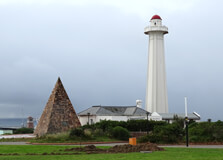
Donkin Reserve is one of the most iconic landmarks in Port Elizabeth, South Africa. The reserve is not only a stunning public park but also offers a glimpse into the city’s rich history and its remarkable architectural heritage. Located at the heart of Port Elizabeth, Donkin Reserve is a popular destination for both locals and tourists alike. This beautiful, historical site is dedicated to the memory of Sir Rufane Donkin, a British administrator, and the park itself is a testament to his contributions to the development of the city. How to Reach Donkin Reserve, Port Elizabeth Donkin Reserve is located in the central area of Port Elizabeth and is easily accessible by various modes of transport. For those traveling by car, the reserve is situated near the intersection of Market Street and Donkin Street. There are several public transport options, including buses and taxis, which regularly operate in and around the city center. Visitors arriving from the Port Elizabeth International Airport can take a taxi or a rental car, with a journey time of approximately 15-20 minutes to the reserve. Weather The weather in Port Elizabeth is typically mild, with a moderate climate that makes it an enjoyable place to visit year-round. Summers (November to February) are warm and pleasant with temperatures ranging between 20°C to 25°C (68°F to 77°F), while winters (June to August) are cooler, averaging between 10°C to 20°C (50°F to 68°F). Donkin Reserve, being an outdoor attraction, is best visited during the warmer months, but its beauty remains regardless of the season. Timings Donkin Reserve is open to the public daily. While the park itself doesn’t have specific operating hours, it is recommended to visit during daylight hours for safety reasons and to fully appreciate the area’s beauty. Many visitors tend to visit from 8:00 AM to 6:00 PM, which allows ample time to explore the park, take in the stunning views, and learn about the historical monuments scattered throughout the reserve. Why Famous for Donkin Reserve, Port Elizabeth? Donkin Reserve is famous for several reasons. Primarily, it is known for its rich history, as it serves as a tribute to Sir Rufane Donkin, who was the British Lieutenant-Governor of the Cape Colony in the early 19th century. The reserve also features the Donkin Lighthouse, which is an essential part of the city’s history, acting as a guiding beacon for ships entering the harbor. Another reason for its fame is the fact that the park offers breathtaking views of Port Elizabeth and its coastline, making it a favorite spot for tourists to relax and take photos. It’s also known for its beautiful Victorian-style architecture, which adds to its charm and historical significance. Entry and Visit Details about Donkin Reserve, Port Elizabeth There are no entry fees for visiting Donkin Reserve, making it a free public space. Visitors can walk freely through the park and explore its many attractions, including the famous Donkin Lighthouse, the surrounding promenade, and the various historical monuments located within the park. It’s a wonderful place for a leisurely walk, a picnic, or simply to enjoy the outdoors. Although the park is open to the public, it’s advisable to visit during daylight hours for a more comfortable experience. History and Architecture The history of Donkin Reserve is closely tied to the founding of Port Elizabeth. The reserve was created in the early 1800s as part of the city’s development under Sir Rufane Donkin’s guidance. One of the most notable features of Donkin Reserve is the Donkin Lighthouse, which was built in 1861 and is still operational today. The lighthouse was originally constructed to guide ships into the harbor, and it remains one of the oldest structures in the area. The architecture of the park blends Victorian and colonial influences, with intricate stonework, historical monuments, and decorative elements throughout the area. The reserve is home to several memorials, including those dedicated to Sir Donkin himself, as well as a stunning pyramid-shaped memorial that commemorates his legacy. Things to Do at Donkin Reserve, Port Elizabeth There are a variety of activities to enjoy at Donkin Reserve. Visitors can: Take a leisurely walk through the park and enjoy the beautiful landscaping. Admire the historic architecture and monuments scattered throughout the reserve. Visit the Donkin Lighthouse, which offers panoramic views of the city and coastline. Relax on one of the park benches and enjoy the view of the city or the sea. Take photographs of the stunning views, historical buildings, and scenic landscapes. Have a picnic or enjoy a relaxed afternoon in the peaceful surroundings. Facts About Donkin Reserve, Port Elizabeth Donkin Reserve is named after Sir Rufane Donkin, who was responsible for naming Port Elizabeth in 1820. The Donkin Lighthouse is one of the oldest in South Africa, and it still serves as a guide to ships entering the harbor. The reserve is home to several historical monuments, including a pyramid-shaped memorial to Sir Rufane Donkin. Donkin Reserve offers spectacular views of the surrounding city and coastline. The park is located near the historic city center and is a short distance from other major attractions in Port Elizabeth. Tips for Visiting Donkin Reserve, Port Elizabeth Wear comfortable shoes, as you’ll be walking on uneven ground while exploring the park. Bring a camera to capture the stunning views and historical monuments. Visit early in the day to avoid the midday heat, especially during the summer months. Stay hydrated and bring water, especially if you plan to walk around the reserve for an extended period. Respect the local wildlife and natural environment—do not litter in the park. If visiting the lighthouse, check if it is open for tours during your visit. Donkin Reserve is a great spot for families, so bring along a picnic to enjoy with loved ones.
Explore More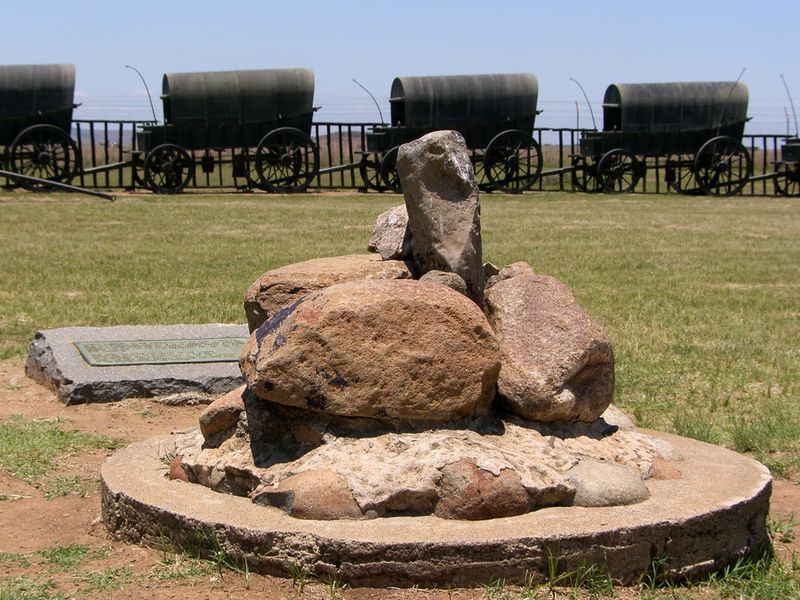
Blood River/Ncome Heritage Site
The Blood River/Ncome Heritage Site is the place where the two forces of the Voortrekkers and the Zulus met. The Voortrekkers were furious when the Zulu chief, Dingaan, murdered Piet Retief and his men and thus they attacked the Zulu kingdom. On December 16, 1838, the two forces met on the banks of the river Ncome. The Zulus were strongly numbered at 15,000 but could not penetrate the defensive camp of the Voortrekkers. The Zulus finally fled and the left the river red with blood. The Blood River/Ncome Heritage Site is one of the rare war sites where monuments celebrating the glory of both the sides are present. The Ncome monument and Museum Complex on the east bank of the river are dedicated to the Zulu warriors who fell. On the western bank of the river Ncome, there is the Blood River Monument and Museum dedicated to the Voortrekkers. The set up of the defensive camp made on the day of battle is represented with a life-size replica. With the monuments and the museums on both sides of the river, visitors of the Blood River/Ncome Heritage Site are often transported to the day of the great battle.
Explore More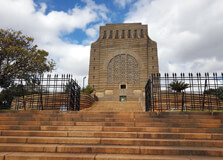
The Voortrekker Monument, located in Pretoria, South Africa, is one of the country's most significant historical landmarks. This massive granite structure commemorates the Voortrekkers, the Dutch-speaking pioneers who journeyed into the interior of South Africa in the 1830s and 1840s. The monument stands as a symbol of the Voortrekkers' migration, their struggles, and their contribution to the formation of modern-day South Africa. The monument is a site of national pride, and it offers visitors a deep dive into South Africa’s history, culture, and heritage. History of Voortrekker Monument The Voortrekker Monument was completed in 1949 after almost 14 years of construction, having been designed by architect Gerhard Moerdijk. It was built to honor the Voortrekkers, who embarked on the Great Trek—a period between 1835 and 1852 when Dutch-speaking settlers, known as the Boers or Voortrekkers, migrated from the Cape Colony to escape British rule and seek independence. One of the most significant events of this era was the Battle of Blood River in 1838, where the Voortrekkers, led by Andries Pretorius, defeated the Zulu army. The victory is celebrated as a pivotal moment in the history of the Voortrekkers and the formation of Afrikaner identity. The monument’s grand design reflects the Voortrekkers' resolve and their monumental journey through difficult terrain. The structure is not only a tribute to their courage but also a reminder of the complex history of the interaction between Europeans and indigenous peoples in Southern Africa. Architecture of the Voortrekker Monument The Voortrekker Monument’s architecture is an exceptional blend of classical and Afrikaner elements. The monument is a towering granite structure, standing at 40 meters high and 47 meters long. The design follows an ancient classical form, symbolizing the connection between the Voortrekkers and the past. The exterior features intricate friezes depicting scenes from the history of the Voortrekkers, including their migration and the Battle of Blood River. These carvings add both artistic and historical depth to the monument. The most famous part of the monument is the Hall of Heroes, located inside the building. This hall houses 27 bronze busts of the Voortrekker leaders who played key roles in the Great Trek. The monument also contains a remarkable light display: on December 16th, the anniversary of the Battle of Blood River, a beam of sunlight streams through a small opening in the roof and directly illuminates the cenotaph (memorial stone) within the Hall of Heroes. Why Is Voortrekker Monument Famous? The Voortrekker Monument is famous primarily due to its historical significance. It is a symbol of the Afrikaner people’s struggle for independence during the Great Trek, and it commemorates the legacy of their pioneers. The monument is not only important to South Africa's Afrikaner community but also to the country’s broader historical narrative, offering insight into the diverse and sometimes contested history of South Africa. Over the years, the monument has become a point of reflection on the complex relationships between the settler population and indigenous groups in the region. As such, it is a focal point for discussions about South Africa’s colonial past and the way it shaped the nation. How to Reach Voortrekker Monument, Pretoria? The Voortrekker Monument is located in the southern part of Pretoria, a short distance from the city center. The easiest way to reach the monument is by car, as it is well-signposted from various parts of the city. The monument is situated on a hill, offering panoramic views of Pretoria, and it’s approximately a 20-minute drive from the Pretoria Railway Station. Public transport options are also available, although they may not be as direct or frequent. Taxis or ride-sharing services such as Uber are popular alternatives. Visitors can also take a guided tour from central Pretoria to the monument, which might provide extra historical context during the journey. Weather at Voortrekker Monument The weather in Pretoria is generally warm and pleasant throughout the year. It enjoys a mild climate, with hot summers and mild winters. Summer temperatures can reach up to 30°C (86°F), while winter temperatures can drop to 5°C (41°F) at night but are usually comfortable during the day. The dry season in Pretoria is during the winter months, while the summer months from November to February receive occasional rainfall. If visiting during the summer, it is advised to wear sunscreen, stay hydrated, and wear light clothing. Timings for Voortrekker Monument The Voortrekker Monument is open daily to visitors. The typical opening hours are from 08:00 AM to 05:00 PM, allowing ample time for visitors to explore the monument and its museum. On public holidays and weekends, it may be busier, so early arrival is recommended for a more relaxed experience. Entry and Visit Details The entry fee to the Voortrekker Monument is relatively affordable, making it accessible for both locals and tourists. There are also various discounts available for students, children, and senior citizens. The entrance fee typically includes access to both the monument and the museum, where visitors can learn more about the history of the Voortrekkers and the Great Trek. It’s also possible to take a guided tour, which adds deeper context to the experience of visiting the monument. It is recommended to check the official website or contact the monument directly for the most up-to-date pricing, especially if you are planning a group visit or school excursion. Things to Do at Voortrekker Monument Aside from marveling at the architecture and history of the monument itself, there are various activities to engage in during your visit. You can: Explore the museum, which showcases the artifacts and history of the Voortrekkers. Take a guided tour to learn about the monument’s significance and its intricate details. Walk around the surrounding park, enjoying the peaceful atmosphere and scenic views of Pretoria. Visit the Wall of Remembrance, which contains the names of over 26,000 Voortrekkers who took part in the Great Trek. Interesting Facts about Voortrekker Monument The monument’s construction began in 1937 and was completed in 1949, after 12 years of work. It was designed by architect Gerhard Moerdijk, who was inspired by classical styles such as Greek and Roman architecture. The Hall of Heroes inside the monument features 27 bronze busts of Voortrekker leaders. On December 16th, the anniversary of the Battle of Blood River, sunlight shines through the monument’s roof to illuminate the cenotaph inside the Hall of Heroes. The monument stands 40 meters high and is made of granite, symbolizing the Voortrekkers' strength and resolve. Tips for Visiting Voortrekker Monument Arrive early to avoid large crowds, especially during peak tourist seasons or public holidays. Wear comfortable shoes, as you may need to walk a fair distance and climb some stairs. Don’t forget sunscreen and a hat, especially if visiting during the summer months. If you’re interested in photography, bring a camera to capture the stunning views from the top of the monument. Check for any special events or exhibitions happening at the monument during your visit. Conclusion The Voortrekker Monument is an iconic landmark in Pretoria, rich in history, culture, and heritage. Whether you’re interested in South Africa’s colonial past, architecture, or simply exploring a beautiful and thought-provoking site, the Voortrekker Monument offers a unique experience. From its impressive structure to its deep historical significance, the monument is a must-see destination for anyone visiting Pretoria.
Explore More
Anglo–Boer War Memorial Pillars
The Anglo–Boer War Memorial Pillars in Vaalwater stand as a silent but powerful tribute to the men and women who were involved in one of South Africa’s most defining historical conflicts—the Anglo-Boer War (1899–1902). These memorial pillars are not only symbolic of remembrance but also serve as historical landmarks that reflect the region’s involvement in the war. Nestled in the scenic and historically rich Waterberg region, the memorial offers visitors a chance to reflect on the past and understand the complexities of South Africa’s colonial and wartime history. How to Reach Anglo–Boer War Memorial Pillars, Vaalwater Vaalwater is well connected via road and is situated in the heart of Limpopo Province, making the Anglo–Boer War Memorial Pillars fairly accessible. By Car: From Johannesburg or Pretoria, take the N1 northbound and exit at Modimolle, then follow the R33 road to Vaalwater. The drive typically takes about 3.5 to 4 hours. By Bus: Intercity bus services to Modimolle or Lephalale are available, followed by a local taxi or private transport to Vaalwater. By Air: The nearest major airport is in Polokwane, roughly 2.5 hours away by car. Private charter options are available for quicker access. Weather Vaalwater experiences a semi-arid climate with distinct wet and dry seasons: Summer (October–March): Warm with rainfall, ideal for lush green surroundings but sometimes hot. Temperatures range from 18°C to 33°C. Winter (May–August): Dry and cooler, excellent for walking tours and photography. Temperatures range from 6°C to 22°C. Best Time to Visit: Between April and September for clear skies, pleasant temperatures, and ease of outdoor exploration. Timing The memorial site is generally open for public visits all year round: Visiting Hours: 8:00 AM to 5:00 PM daily. Closed Days: None officially, but it’s best to visit during daylight for safety and visibility. Special Tours: Available through local historical societies or arranged in advance through tourism offices. Why Famous for Anglo–Boer War Memorial Pillars, Vaalwater? These memorial pillars are important markers of South African heritage. They commemorate the soldiers—both Boer and British—who fought and perished during the Anglo-Boer War. Their significance lies not only in remembrance but also in how they serve as educational touchpoints for understanding the socio-political landscape of early 20th-century South Africa. The site is particularly famous among history enthusiasts, researchers, and those tracing family genealogy connected to the war. Entry and Visit Details about Anglo–Boer War Memorial Pillars, Vaalwater Entry Fee: Free for all visitors. Parking: Available nearby, with easy walking access to the memorial. Accessibility: Basic walking paths are available; however, wheelchair access may be limited due to terrain. Tour Availability: Guided historical tours can be booked through the Waterberg tourism office or local lodges. History and Architecture The Anglo–Boer War Memorial Pillars in Vaalwater were erected to honor those who served in the Second Anglo-Boer War, which was a turning point in South Africa’s colonial history. The memorial is built in a traditional pillar format, often made from local stone and featuring plaques inscribed with names, dates, and dedications. The architecture is modest yet dignified, meant to evoke solemnity and respect. These types of memorials were often constructed shortly after the war or in the early 20th century as community-driven remembrance initiatives. They reflect the regional pride and grief experienced by both Boer families and British sympathizers alike. Things to Do Historical Reflection: Spend time reading the names and inscriptions on the memorial pillars. Photography: Capture the tranquil landscape and stonework, especially during sunrise or sunset. Educational Visits: Great for school field trips and history students studying colonial-era South Africa. Guided Tours: Gain deeper insights with a local guide well-versed in the Anglo-Boer War history. Picnic: A peaceful area nearby can be used for quiet picnicking and relaxation. Facts about Anglo–Boer War Memorial Pillars, Vaalwater The war memorial commemorates both local Boer soldiers and British colonial forces. The Anglo-Boer War lasted from 1899 to 1902 and significantly shaped South Africa’s political trajectory. Vaalwater was a strategic region due to its terrain and location, with various small skirmishes occurring in nearby areas. Many of the families in the area today are descendants of those who lived through the war. The memorial is one of several found throughout the Limpopo and Free State provinces, reflecting widespread local impact. Tips about Anglo–Boer War Memorial Pillars, Vaalwater Wear Comfortable Shoes: The terrain may include uneven ground or gravel paths. Bring Water: Especially in warmer months, hydration is important during outdoor visits. Respect the Site: As a place of remembrance, loud behavior or littering is discouraged. Local Guide: Hiring a local guide can greatly enhance your understanding of the war and the region’s role in it. Combine with Nearby Attractions: Make it a day trip by visiting other sites like the Rhino Museum or Mokolo Dam Nature Reserve. Photography Tip: Early morning light provides great contrast on the stone pillars for more detailed photographs.
Explore More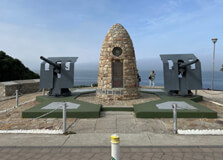
The Paardekraal Monument is one of the most historically significant landmarks in Krugersdorp, South Africa. It stands as a powerful symbol of Afrikaner heritage and pride, marking the spot where a pivotal meeting of Boer leaders took place in 1880. This meeting led to the First Boer War and eventually helped restore the independence of the South African Republic (ZAR). The monument is located on a hill in the heart of Krugersdorp and is a site of deep national importance, especially to those interested in South African history and culture. How to Reach Paardekraal Monument, Krugersdorp The Paardekraal Monument is easily accessible by road. It is located within Krugersdorp, which lies just west of Johannesburg. If you're coming from Johannesburg, take the N14 or R28 highways toward Krugersdorp. Once in the town, the monument is located near the Paardekraal Drive and Voortrekker Road intersection. Local road signs will guide you to the monument. For visitors without a private vehicle, taxi services or ride-hailing apps like Uber and Bolt are reliable and widely used in the area. Weather at Paardekraal Monument Krugersdorp experiences a subtropical highland climate. Summers (November to February) are generally warm and sometimes wet, with temperatures ranging from 20°C to 30°C. Afternoon thunderstorms are common in summer. Winters (June to August) are dry and cool, with clear skies and daytime temperatures around 15°C to 22°C. Early mornings can be chilly, sometimes dropping to below 5°C. The best time to visit for comfortable sightseeing is during spring (September to November) or autumn (March to May), when the weather is mild and pleasant. Timings of Paardekraal Monument The Paardekraal Monument is an open-air site and does not have strict entry hours. It is generally accessible to the public every day from early morning until sunset. While there is no official ticket office or guided tour at all times, visitors are encouraged to visit during daylight hours for safety and visibility. It’s recommended to avoid late evening visits as lighting around the area may be limited. Why is Paardekraal Monument Famous? The Paardekraal Monument is famous because it marks the site of an important gathering of Boer leaders in December 1880. During this gathering, over 6,000 men assembled and took a symbolic oath to fight for the independence of the South African Republic (ZAR), which had been annexed by the British in 1877. This meeting directly led to the First Boer War. The monument serves as a symbol of unity, resistance, and national pride, especially for the Afrikaner community. It also represents the birth of modern-day Krugersdorp, as the town was founded shortly afterward. Entry and Visit Details There is no entrance fee to visit the Paardekraal Monument, as it is a public heritage site. Visitors can walk up the steps leading to the monument and explore the area freely. Basic amenities like parking and benches are available, but the site does not have a full visitor center or regular staff. It is best to bring water and snacks if you plan to spend time there. Although not a large attraction, it is an essential stop for those interested in South African history or the Boer Wars. History and Architecture The Paardekraal Monument was officially unveiled in 1891 to commemorate the vow made by Boer leaders in 1880. It is built from piled stones, echoing the traditional African and Boer practice of marking sacred or significant places with cairns (stone piles). During the 1880 gathering, men added stones to a large cairn to symbolize their unity and commitment to the cause. The current monument was later constructed at the same location to preserve that historical moment. It features inscriptions and commemorative plaques that explain its significance. Things to Do at Paardekraal Monument While the Paardekraal Monument is not a large recreational site, it offers several meaningful and reflective activities for visitors: Historical Exploration: Learn about the First Boer War and the fight for independence through plaques and local information boards. Photography: Capture panoramic views of Krugersdorp from the elevated monument site. Sightseeing: Enjoy a quiet moment in a space that reflects deep historical and cultural roots. Walking Tours: Combine your visit with a walking tour around Krugersdorp’s historic district. Interesting Facts about Paardekraal Monument The name "Paardekraal" translates to "Horse Corral" in Afrikaans, referring to the horse enclosures that were common in the area. The monument was declared a National Monument in 1938 during the centenary of the Great Trek. It has become a symbol of both local identity and national pride for Afrikaners. Each stone in the original cairn was laid by a Boer fighter as part of a vow to fight against British rule. The site is considered the birthplace of Krugersdorp, which grew around the political momentum generated by the 1880 meeting. Tips for Visiting Paardekraal Monument Visit during daylight hours for safety and better visibility. Wear comfortable shoes, especially if you plan to walk up to the monument. Bring water and a hat, particularly in summer months when it can get hot. Take time to read the plaques and understand the historical context of the site. Combine your visit with other nearby historical attractions in Krugersdorp, such as the Krugersdorp Museum or the West Rand Heritage Route.
Explore More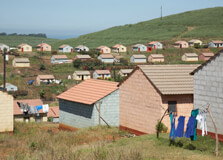
The Victoria Mxenge Monument is a tribute in Lansdowne, Cape Town, honoring the life and legacy of Victoria Nonyamezelo Mxenge (1942–1985). A nurse, midwife, civil rights lawyer, and anti‑apartheid activist, she symbolized resistance and justice. Though she was tragically assassinated in Umlazi in 1985, her memory lives on through this memorial, located near the intersection of Lansdowne and Ottery Roads in the community named after her :contentReference[oaicite:2]{index=2}. How to Reach Victoria Mxenge Monument, Lansdowne The monument stands in the Victoria Mxenge housing development, just south of Lansdowne’s main intersection with Ottery Road :contentReference[oaicite:3]{index=3}. It can be reached by: Car: From Cape Town, take M5 south, turn onto Ottery Road, then into the Victoria Mxenge community area. Public Transport: Minibus taxis and MyCiTi buses connect Lansdowne and Athlone; disembark near Ottery Road and walk a short distance. Ride-hailing: Uber and Bolt can drop you off at the community entrance. Weather at Victoria Mxenge Monument Cape Town’s Mediterranean climate applies: Summer (Nov–Feb): Warm and dry (25–30 °C), with occasional strong cooling breezes from the south-east. Winter (Jun–Aug): Cool and wet (10–18 °C), with most of Cape Town’s 650–1000 mm of annual rainfall falling then :contentReference[oaicite:4]{index=4}. For a monument visit, spring and autumn offer pleasant, mild days with fewer tourists. Timings of Victoria Mxenge Monument As a community landmark in an open neighborhood, the site is accessible 24/7. There are no official visiting hours or admission fees. However, visits during daylight (reservations day-to-dusk) are recommended for safety and visibility. Public commemorative events typically occur on significant dates such as August 1, the anniversary of Victoria Mxenge’s death. Why Victoria Mxenge Monument is Famous - It commemorates a strong female activist who transitioned from nurse and midwife to civil rights lawyer, defending members of the UDF and becoming a prominent voice after her husband's murder :contentReference[oaicite:5]{index=5}. - The memorial stands at the heart of a housing development built by women—a community development project named after her, highlighting grassroots empowerment and women's agency :contentReference[oaicite:6]{index=6}. - She and her husband, Griffiths Mxenge, are honored with the Order of Luthuli in Silver (posthumously awarded in 2006) for their supreme sacrifices :contentReference[oaicite:7]{index=7}. Entry and Visit Details Entry is free and open at any time. Visitors are encouraged to explore respectfully. The area can be visited as part of community or historical trails in Lansdowne. If visiting solo, daylight is advised for safety. Some tours of Cape Town’s anti‑apartheid heritage may include the monument. History and Architecture Named in memory of a fearless activist, the Victoria Mxenge housing project emerged in the early 1990s as an icon of female empowerment and participatory community-building :contentReference[oaicite:8]{index=8}. The monument itself, unveiled in the suburb and created through community and municipal collaboration, is often a bronze statue or commemorative plaque. Sculptors have portrayed her in a dynamic, open stance to symbolize her welcoming spirit and leadership :contentReference[oaicite:9]{index=9}. Things to Do at Victoria Mxenge Monument Reflect: Pause at the statue or plaque to remember her contributions and read inscriptions recounting her work. Community Walks: Combine your visit with a walking tour exploring the Victoria Mxenge housing development and nearby landmarks. Meet Locals: Speak to community members or activists about ongoing development and how the monument continues to influence local identity. Photography: Capture the statue, street scenes, and commemorative dates. Attend Events: Participate in anniversary ceremonies or gatherings, especially on August 1. Interesting Facts The housing development named after her was built and run by women—not developers—symbolizing Victoria Mxenge’s ethos :contentReference[oaicite:10]{index=10}. She was part of the legal defence team for the UDF and Natal Indian Congress in high-profile treason trials in 1984 :contentReference[oaicite:11]{index=11}. Her husband, Griffiths Mxenge, was murdered in 1981; Victoria took over the law practice before her assassination in 1985 :contentReference[oaicite:12]{index=12}. Her funeral in King William’s Town was attended by over 10,000 people and marked nationally for its emotional impact :contentReference[oaicite:13]{index=13}. Her activism inspired international recognition—Mandela’s praise, Clinton's visit, and posthumous national honors :contentReference[oaicite:14]{index=14}. Tips for Visiting Victoria Mxenge Monument Visit during daylight for better safety and visibility. Combine the monument with a self-guided walk through the development to appreciate its origin and significance. Speak with local residents or community leaders to learn more about current projects commemorating her. Attend events or ceremonies around August 1 for meaningful cultural engagement. Bring water, sun protection, and a camera. Consider pairing your trip with visits to nearby heritage sites like Rhodes Memorial or the Amy Biehl Memorial in Gugulethu :contentReference[oaicite:15]{index=15}. Check local news or community Facebook pages for upcoming memorial services or events :contentReference[oaicite:16]{index=16}.
Explore More